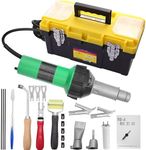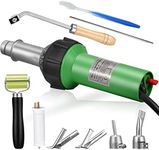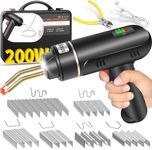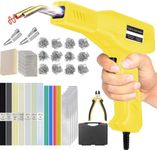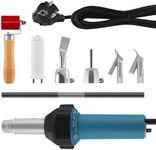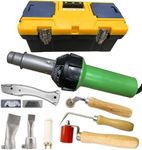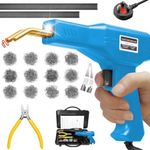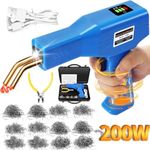Buying Guide for the Best Plastic Welders
When choosing a plastic welder, it's important to understand the specific needs of your project and the types of plastics you will be working with. Plastic welders are used to join plastic materials together by melting the surfaces and pressing them together. The right welder for you will depend on factors such as the type of plastic, the thickness of the material, and the precision required for your work. By understanding the key specifications, you can make an informed decision that ensures your plastic welding tasks are completed efficiently and effectively.Type of Plastic WelderPlastic welders come in various types, including hot air welders, ultrasonic welders, and extrusion welders. The type of welder you choose depends on the specific application and the type of plastic you are working with. Hot air welders are versatile and suitable for many types of plastics, making them a good choice for general use. Ultrasonic welders are ideal for precision work and are often used in manufacturing settings. Extrusion welders are best for heavy-duty applications and thicker materials. Consider the nature of your projects and the materials you will be using to determine the best type of welder for your needs.
Power OutputThe power output of a plastic welder determines how quickly and effectively it can melt plastic materials. Power is usually measured in watts, and higher wattage means more power. For small, delicate projects, a lower power output may be sufficient, while larger, more demanding tasks will require a higher power output. If you are working with thicker materials or need to complete tasks quickly, opt for a welder with higher power output. However, for precision work on thinner materials, a lower power output may be more appropriate to avoid damaging the plastic.
Temperature ControlTemperature control is crucial in plastic welding as different plastics melt at different temperatures. A welder with adjustable temperature settings allows you to tailor the heat to the specific type of plastic you are working with, ensuring a strong bond without damaging the material. Basic models may have fixed temperature settings, which can limit their versatility. If you work with a variety of plastics, look for a welder with precise temperature control to accommodate different melting points and achieve optimal results.
Nozzle Types and SizesThe nozzle of a plastic welder affects the precision and type of weld you can achieve. Different nozzle types and sizes are suited for different tasks. Smaller nozzles are ideal for detailed work and tight spaces, while larger nozzles are better for covering larger areas quickly. Some welders come with interchangeable nozzles, providing flexibility for various projects. Consider the nature of your work and whether you need the ability to switch between different nozzle types to achieve the desired results.
Ease of UseEase of use is an important factor, especially if you are new to plastic welding. Look for features such as ergonomic design, intuitive controls, and clear instructions. A welder that is easy to handle and operate will make your work more efficient and enjoyable. If you are a beginner, consider a model with user-friendly features that allow you to learn and improve your skills without frustration. Experienced users might prioritize advanced features that offer greater control and precision.
PortabilityPortability is a consideration if you need to move your welder between different locations or work on-site. Lightweight and compact models are easier to transport and store. If your work requires frequent travel or you have limited workspace, a portable welder can be a practical choice. However, if you primarily work in a fixed location, portability may be less of a concern, and you might prioritize other features such as power and versatility.

